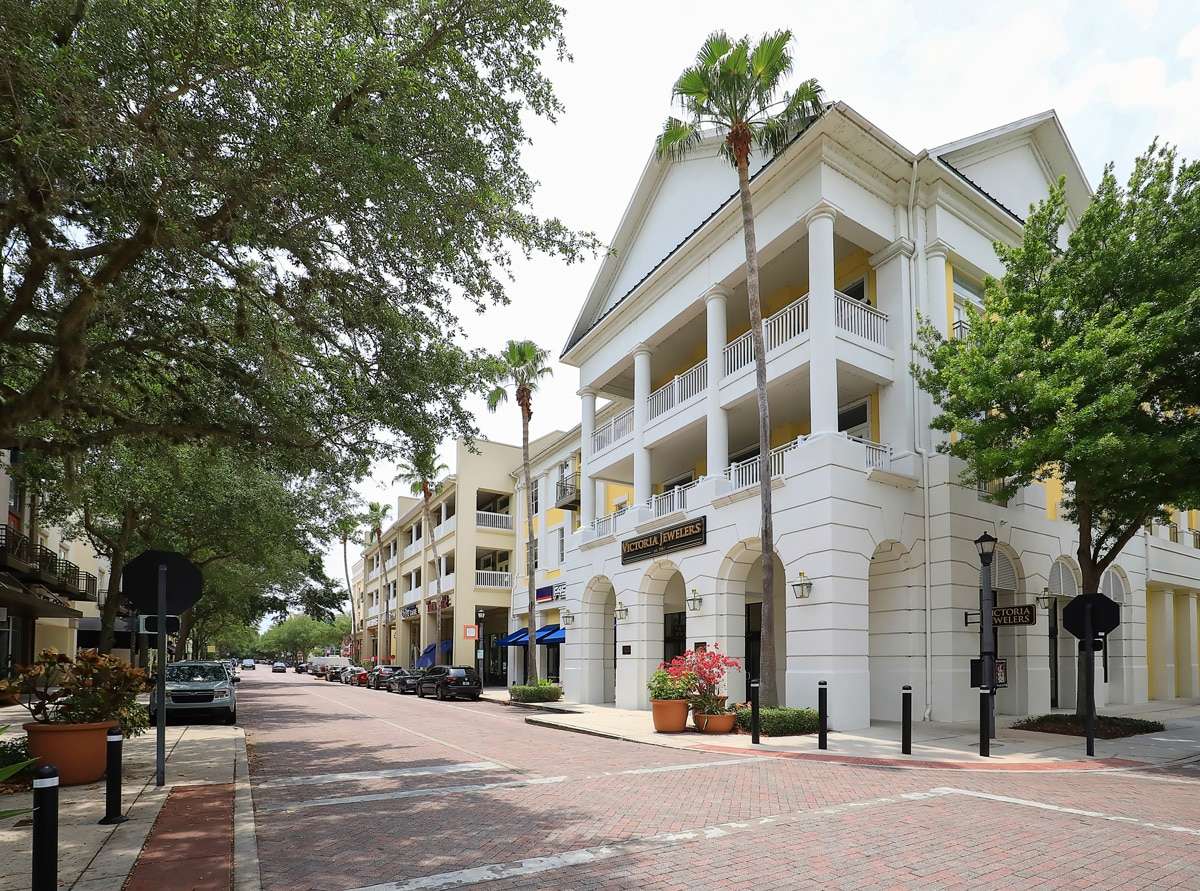
By Amanda Mitchell, Manager of Permitting Services

Amanda Mitchell, Manager of Permitting Services
Recently, the Orange County Board of County Commissioners took a decisive step toward reshaping the region’s future by adopting Vision 2050 and the new Orange Code. These landmark initiatives are designed to modernize the county’s approach to growth, development and community planning.
The Orange Code, set to take effect in mid-July, will replace the decades-old Land Development Code (LDC), introducing a more flexible and forward-thinking regulatory framework. Simultaneously, the County’s Comprehensive Plan has been updated and rebranded as Vision 2050, incorporating over 30 years of planning insights and addressing more than 60 years of evolving land use needs.
Before Vision 2050 can be fully implemented, it must pass a compliance review by the Florida Department of Economic Opportunity (DEO) to ensure alignment with state planning laws. Once approved, both Vision 2050 and the Orange Code will serve as a transformative foundation for how Orange County manages growth and preserves its unique character. These updates are expected to bring greater zoning flexibility, streamlined permitting and approval processes, and clearer design standards— all of which aim to support more predictable, efficient and sustainable development.
In this post, we’ll explore the most impactful changes and challenges and what they mean for businesses in the commercial development sector.
What the Orange Code Means for Planned Developments
New Development and Redevelopment of PDs
The adoption of the Orange Code brings a major shift for developers. Whether pursuing new development or revisiting existing Planned Developments (PDs), the Orange Code presents new design challenges to align with the county’s new vision.
What’s the vision? Form-based, intentional and predictable growth with a desire to create place, experience and community. A great example of this type of planning and design in action is Baldwin Park, one of the most well-known master-planned communities in Central Florida. Developed with a strong emphasis on walkability, public realm design and architectural cohesion, Baldwin Park embodies many of the principles that the Orange Code now seeks to replicate countywide.
The Orange Code has a significant impact on how developers approach entitlements, design and approvals. Existing PDs are no longer the assumed standard, and new proposals must meet stricter design requirements under Transect Zones.
For New Development: Embrace the Orange Code
- PDs are no longer. New proposals must follow Orange Code Transect Zones, which use form and context—not negotiations—to guide development.
- Design is form-based. Building types, street layouts and open space are regulated through clear, visual standards replacing the former use-based.
- Streamlined. Reduced discretionary steps mean fewer delays and more transparency.
Developments under six acres that do not involve subdivision can proceed directly to permitting, bypassing rezoning or additional public hearings and significantly reducing permitting timelines.
For Redevelopment: Plan for Transition
- Existing PDs are valid—but entitlements remain, and major changes may trigger rezoning under the Orange Code.
- Minor adjustments. Setback tweaks or parking changes may be handled administratively.
- Major revisions need significant shifts in land use, density or site layout require transitioning to a form-based zone.
- Option to opt out of existing PD. Developers may choose to opt out of their existing PD and rezone to the Orange Code if the change is not detrimental to the viability. This offers a path to modernize older entitlements while aligning with current standards.
- Sunset clause. Inactive or outdated PDs may be subject to expiration over time, requiring transition to the Orange Code to proceed with development. This ensures consistency with the County’s long-range vision and eliminates reliance on obsolete entitlements.
Opportunities and Advantages
- Encouraged. Rezoning to Transect Zones can reduce long-term risk and align with county priorities.
- Room for innovation. Mixed-use development, diverse housing and multimodal design are supported and incentivized. The Orange Code allows for increased mixed-use development opportunities that can be applied at different scales, depending on location and designated Place Type and Transect Zone. This will enable developers to tailor projects to a variety of community contexts while meeting the county’s vision for walkable, integrated land use.

Orange Code Impact on Retail Design
New Architectural Design Standards
The Orange Code makes architectural design non-negotiable and transparent. It defines what good design looks like across various scales and settings, providing developers with a more straightforward path to approval while also demanding higher-quality outcomes, particularly in retail, mixed-use and urban infill settings. The Orange Code supports developers in meeting these elevated requirements by offering a broad menu of additional design elements—an area previously deficient in the former LDC.
Retail buildings must now meet mandated transparency ratios for storefronts along primary frontages— typically requiring a minimum percentage of clear glazing at the pedestrian level.
From a developer’s perspective, mandated transparency ratios for storefronts represent both a design challenge and a potential market opportunity. Meeting the required percentage of clear glazing along pedestrian-facing facades may necessitate rethinking conventional layout strategies, particularly for prototypical retail and QSR buildings that favor branding over visibility. When thoughtfully applied, transparency and articulation requirements can elevate curb appeal, support leasing goals and better integrate retail into walkable, mixed-use environments.
Drive-Thru Design & Pedestrian Engagement
Retail development—particularly Quick-Service Restaurants (QSRs) and other auto-centric uses—will face new design expectations under the Orange Code. Traditional drive-thru layouts that prioritize vehicle stacking and circulation over pedestrian engagement must now be reimagined.
The code emphasizes urban form, building orientation and pedestrian access, which limits where drive-thrus can be placed and how they interact with the street. For example, drive-thru lanes can’t separate the building from the roadway. This can be challenging for QSRs that depend on fast, high- volume vehicle flow. Smaller sites may find it harder to fit these new standards, which could affect efficiency and overall site feasibility.
Elevated Landscape Requirements & Roadway Design
The Orange Code elevates the role of landscaping and street-level design in creating cohesive, high-quality developments. Landscaping is no longer just about code compliance—it’s an integrated component of the built environment. Projects must incorporate:
- Integrated landscape design within parking lots, along drive aisles and between structures to soften the built environment.
- Enhanced tree canopy and shade requirements to support sustainability and pedestrian needs.
- Cohesive landscape features that complement open space and stormwater elements while improving visual design.
The code also emphasizes roadway engagement to ensure buildings contribute meaningfully to the public realm:
- Buildings must face streets or civic spaces, not turn their backs.
- Façade transparency and direct pedestrian access from sidewalks are mandatory.
- Curb cuts and driveways are minimized to promote safety.
From a development perspective, these requirements mean greater upfront site planning coordination and design investment. Landscape architects and civil engineers must be involved earlier in the process to ensure compliance with frontage design, shading ratios and canopy coverage. While these standards may increase design and construction costs, they also create opportunities to enhance project appeal, increase tenant satisfaction, and contribute to long-term property value. In short, the Orange Code’s elevated landscape and roadway engagement standards reflect a commitment to quality placemaking, and developers who integrate them effectively will position their projects for greater success.
Impacts on Permitting Process
The Orange Code aims to simplify and clarify the development approval process by introducing a more streamlined approach to approvals through clear, form-based standards. This leads to a more predictable permitting timeline, especially for projects that meet the code’s prescriptive design and layout requirements. For example, new developments under six acres that do not require subdivision may proceed directly to permitting without rezoning, public hearings, or TRG (Technical Review Group) review, significantly shortening the approval window. This helps alleviate many of the inherent headaches that developers experience during the permitting process, such as unexpected delays, unclear requirements and shifting expectations.
However, the higher level of design and documentation required for compliance means that early coordination with design professionals and county reviewers is more important than ever. Developers and retailers alike should expect a more front-loaded permitting process, where detailed site planning, architectural elements and public realm features must be resolved earlier in project development. When well-prepared, this approach can reduce uncertainty and accelerate time to construction.
How Cuhaci Peterson is Supporting Clients Through the Transition to Orange Code
At Cuhaci Peterson, we understand that navigating a new regulatory landscape can be complex—but it also presents exciting opportunities for innovation and leadership in design. Our Permitting services team is actively working with clients to interpret the Orange Code, assess project impacts, and develop strategies that align with the county’s new vision.
We offer:
- Code Impact Assessments
- Design Alignment and Transect Expertise
- Entitlement Strategy and Permitting Guidance
- Ongoing Education and Advocacy
Success under the Orange Code requires more than entitlements—it demands thoughtful design. Engaging a professional architectural team that conducts thorough due diligence and understands the technical and design standards of the Orange Code is essential. Using a team that includes permitting expertise further ensures a smooth path from concept to construction. Cuhaci Peterson is an industry leader that combines architectural design, code compliance strategy and permitting services under one roof. Our integrated approach shortens timelines, minimizes risk and helps navigate Orange County’s evolving regulatory landscape. With decades of experience and a strong reputation for excellence, we are a trusted partner in turning development visions into fully realized, successful outcomes that bring your design visions to life.
NOTE: Some of the information contained in this blog was obtained via the official Vision 2050 and Orange Code website. We encourage you to visit that site for future updates to rules and regulations.
Media Contact
Kraig Koelsch
Manager, Marketing and Communications
407-661-9100
kraig.koelsch@c-p.com
Cuhaci Peterson Maitland (HQ)
Newsletter
Subscribe to our newsletter and get the latest news and updates
About Cuhaci Peterson®
Cuhaci Peterson is a nationally recognized architecture, engineering and planning firm specializing in end-to-end commercial design solutions. Headquartered in Central Florida, the firm has representatives throughout the United States and is licensed in all 50 states. Cuhaci Peterson’s mission of transforming ideas into a value is enhanced by a staff of experts who collaborate with clients to translate visions into designs that elevate brands.
